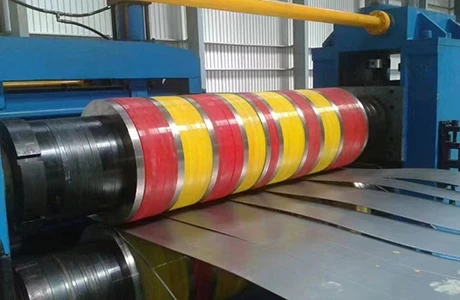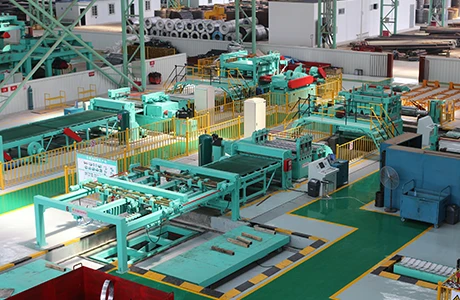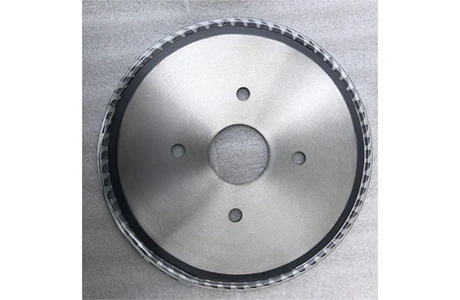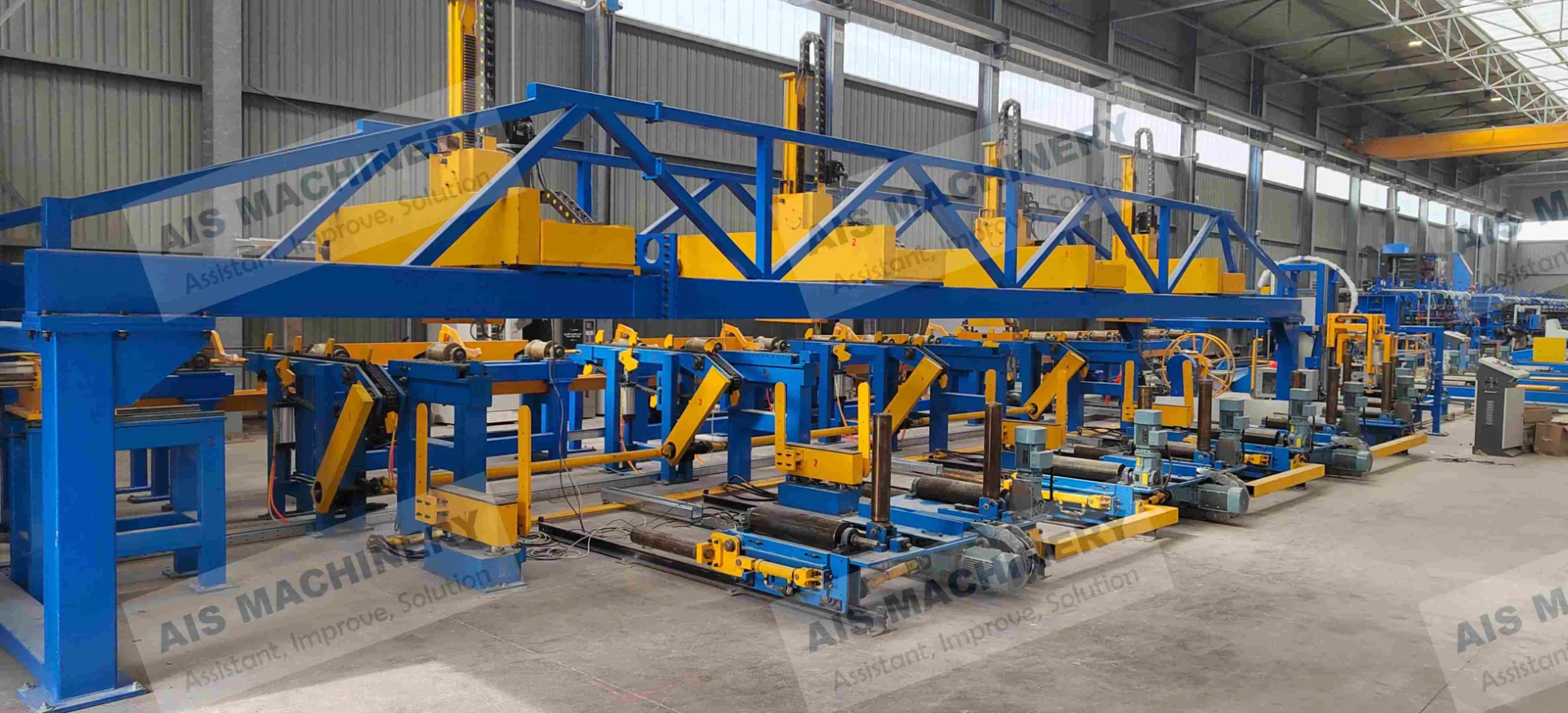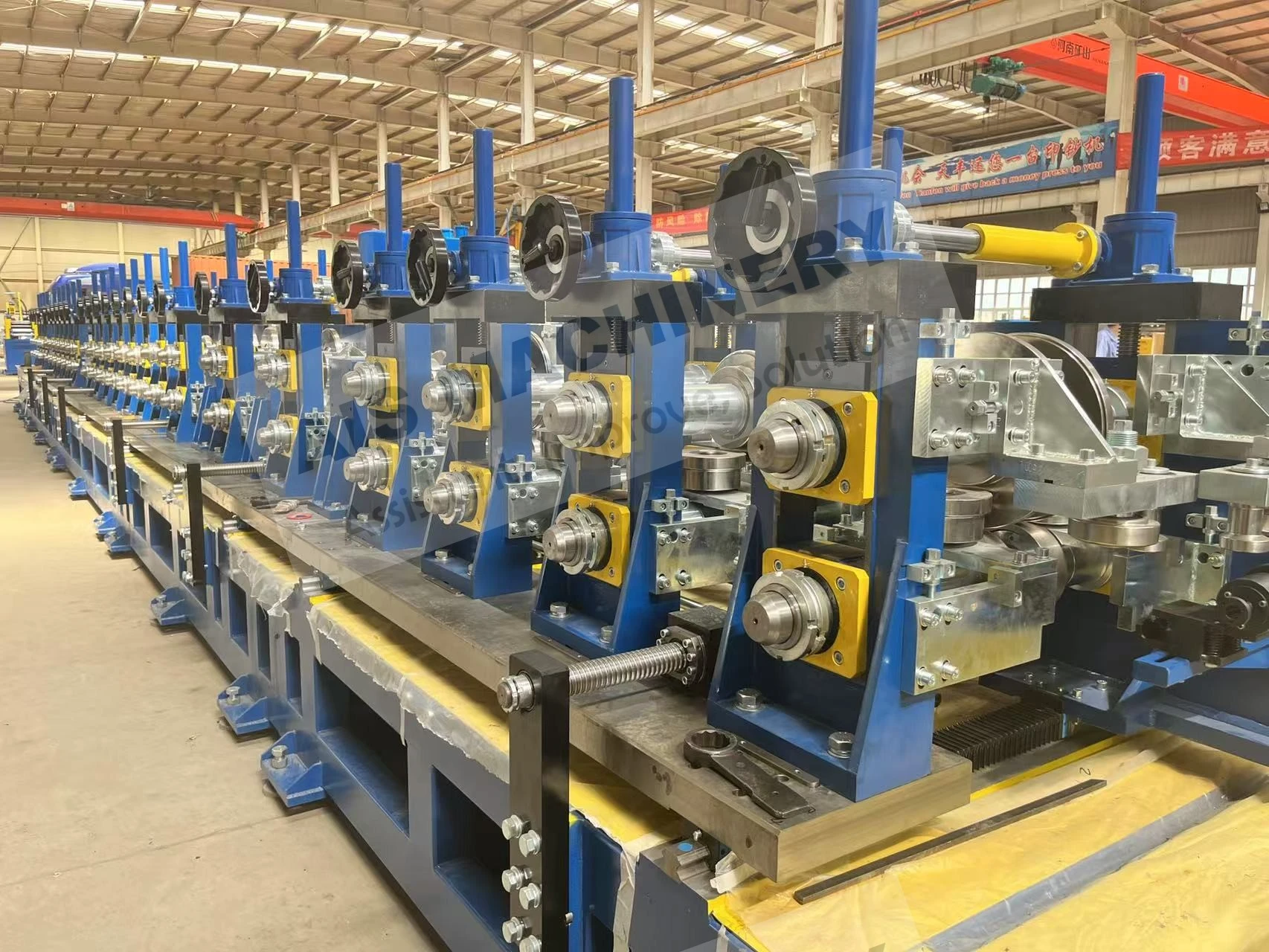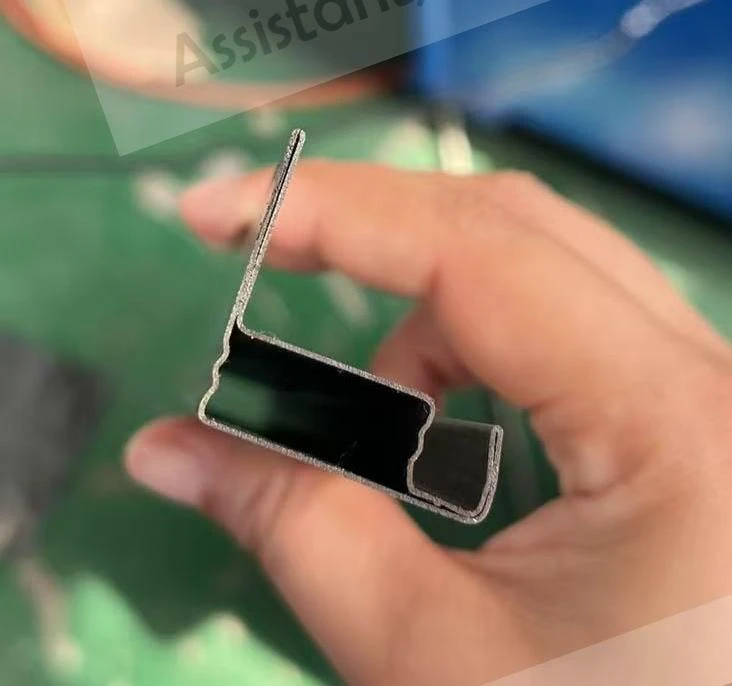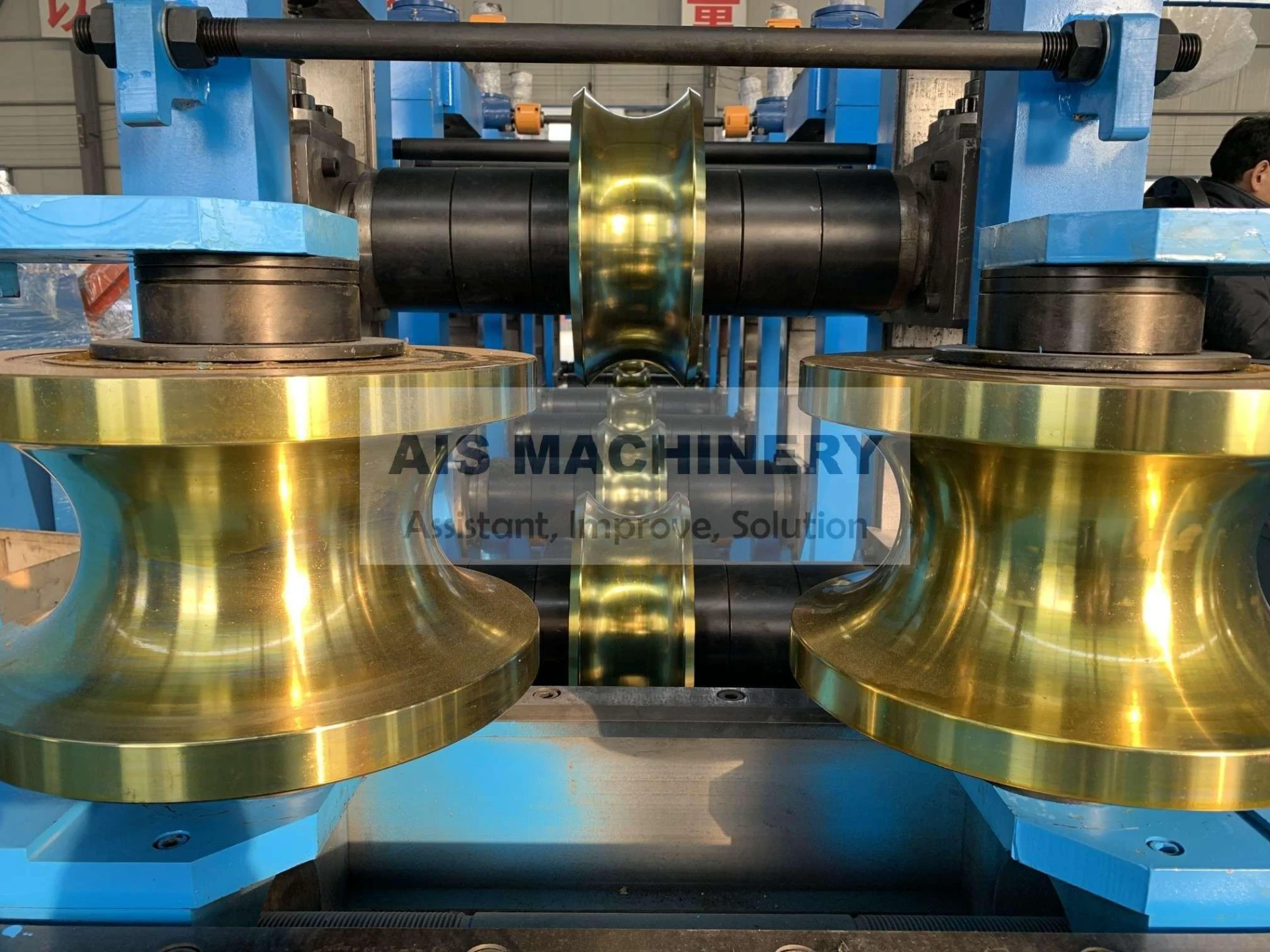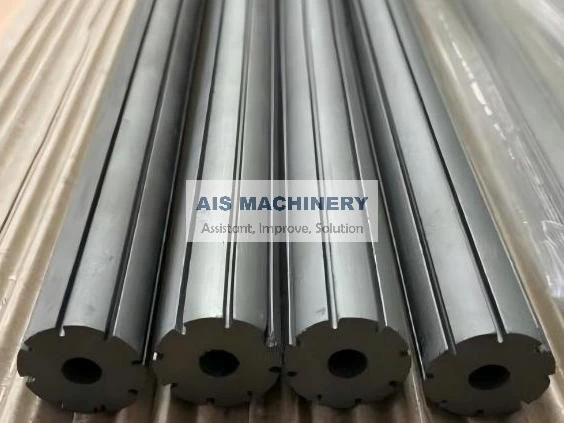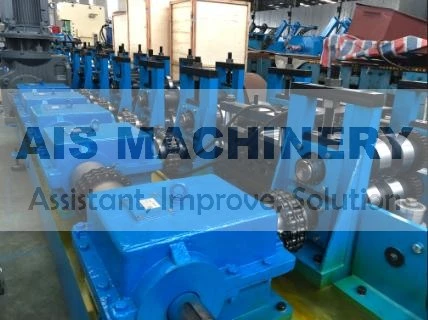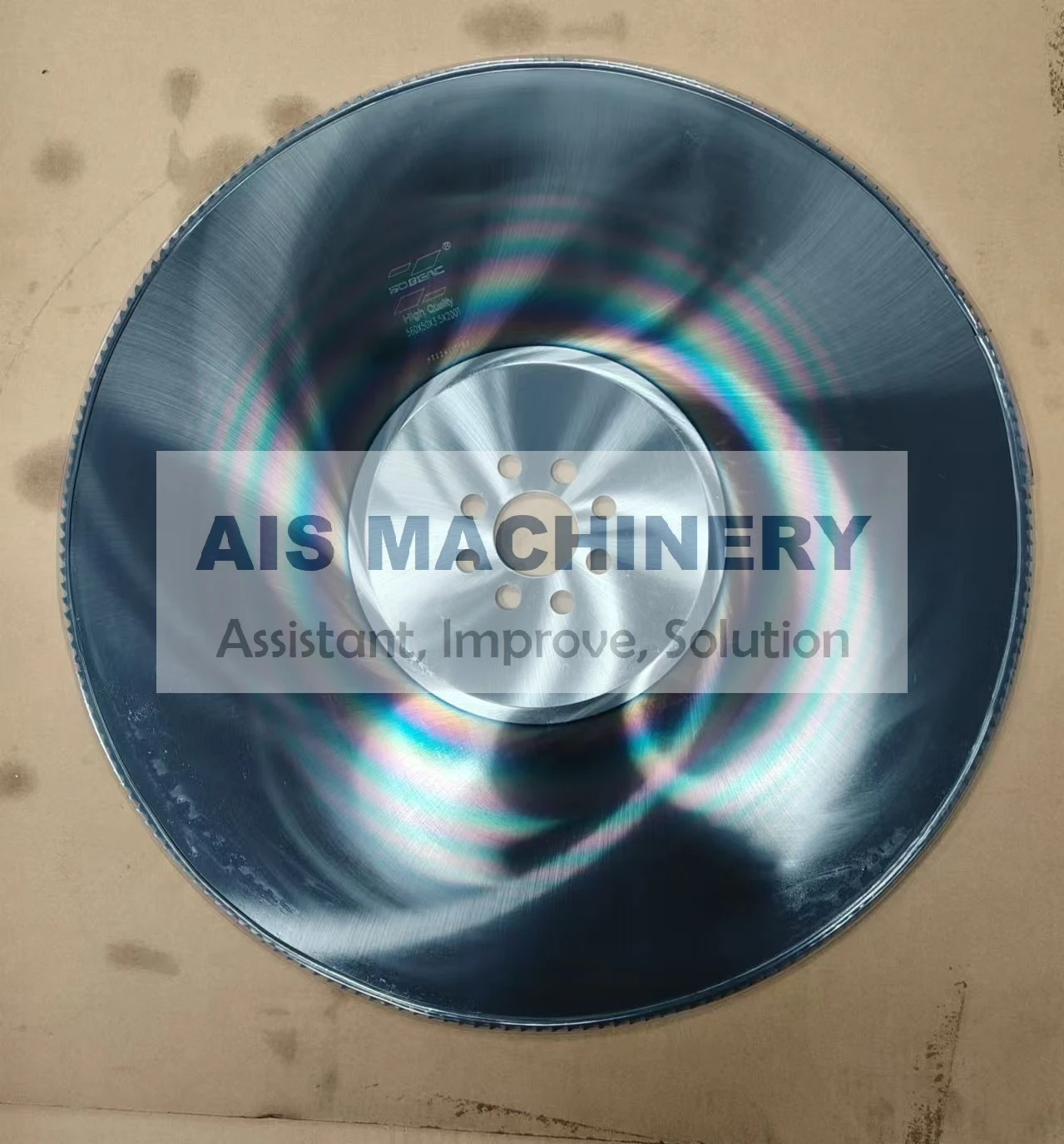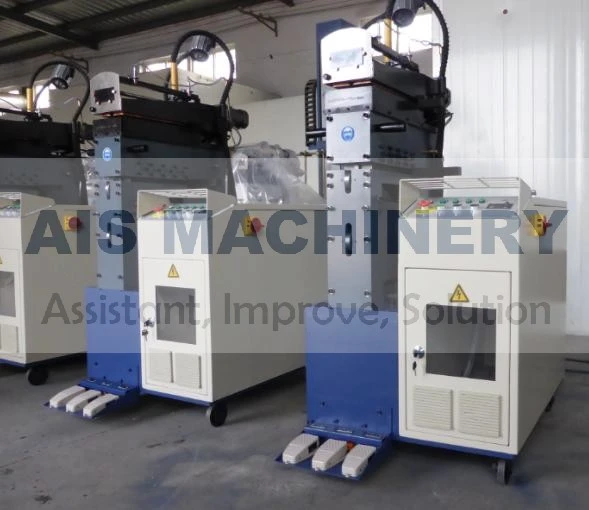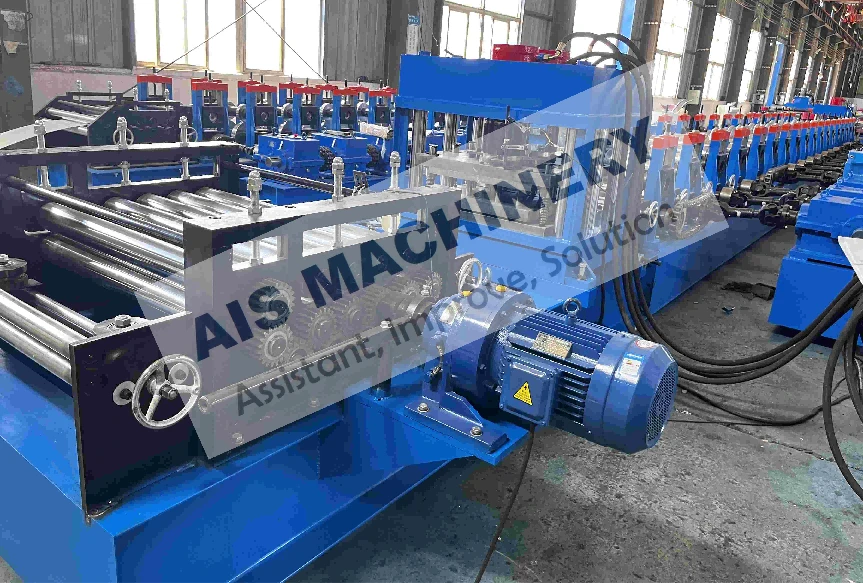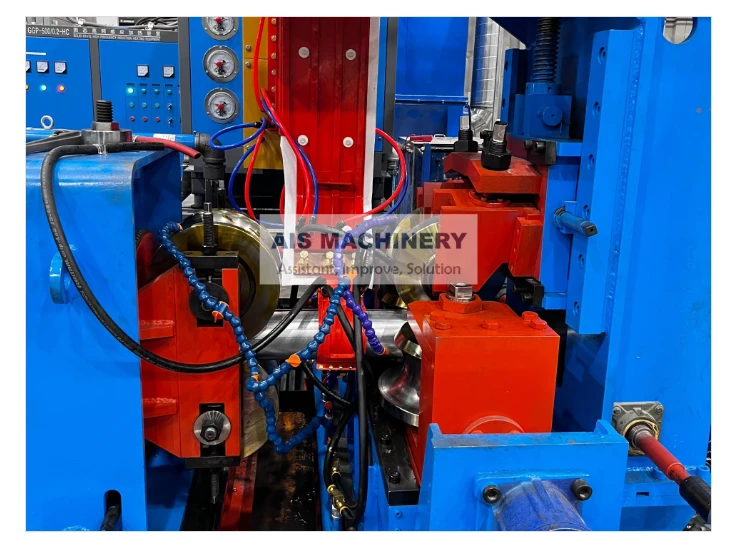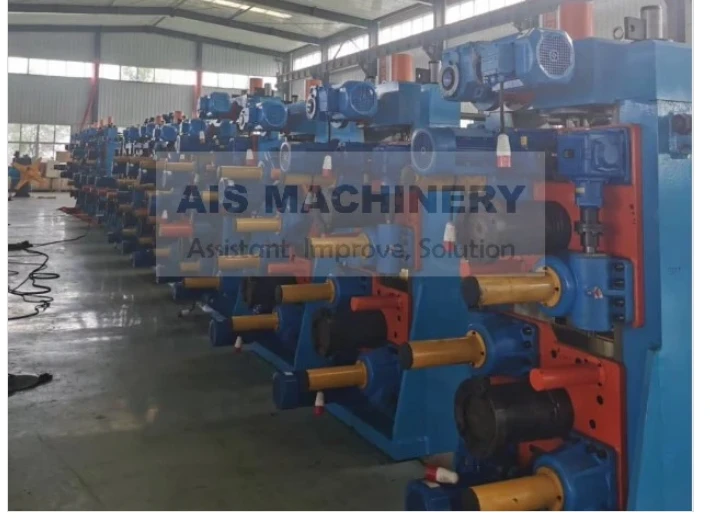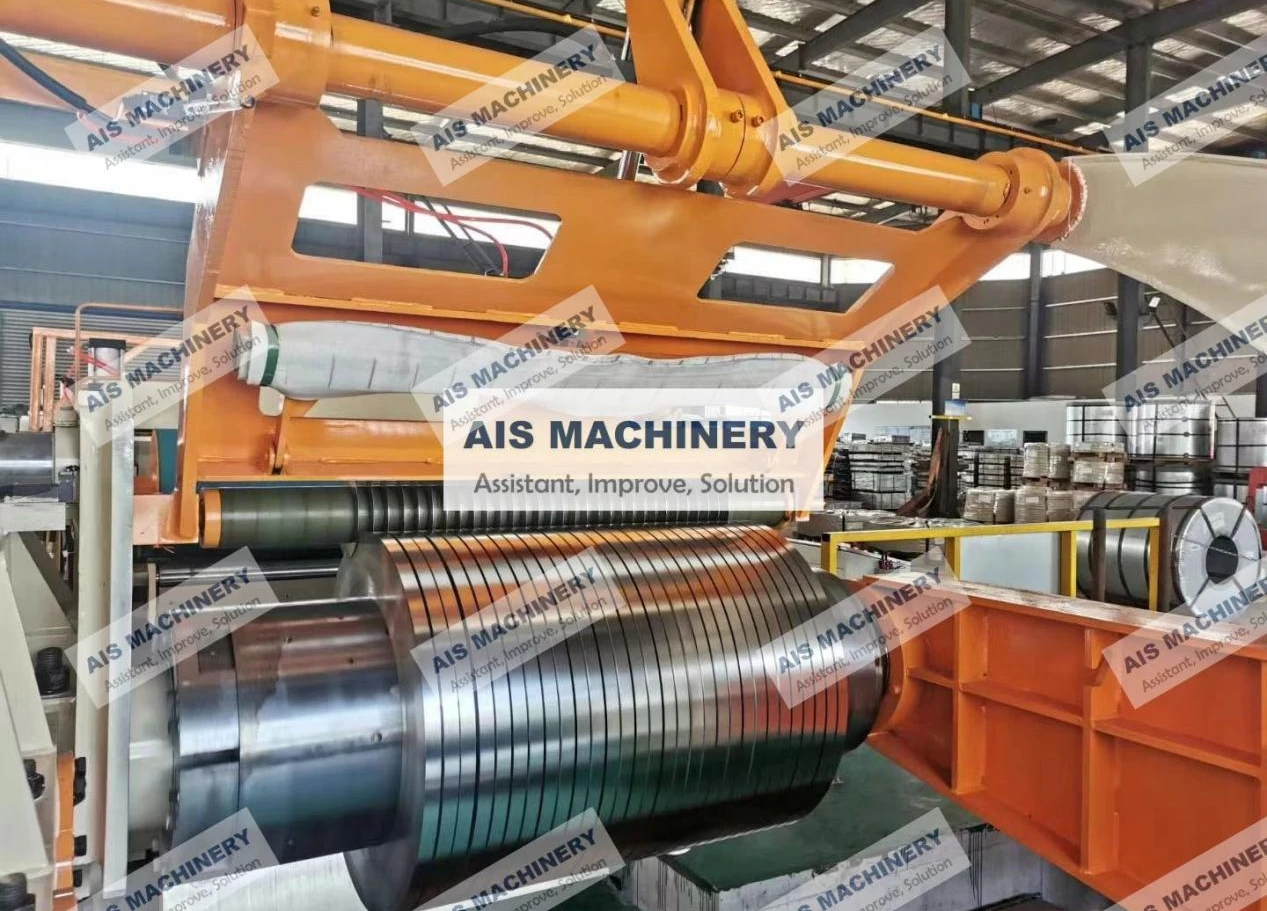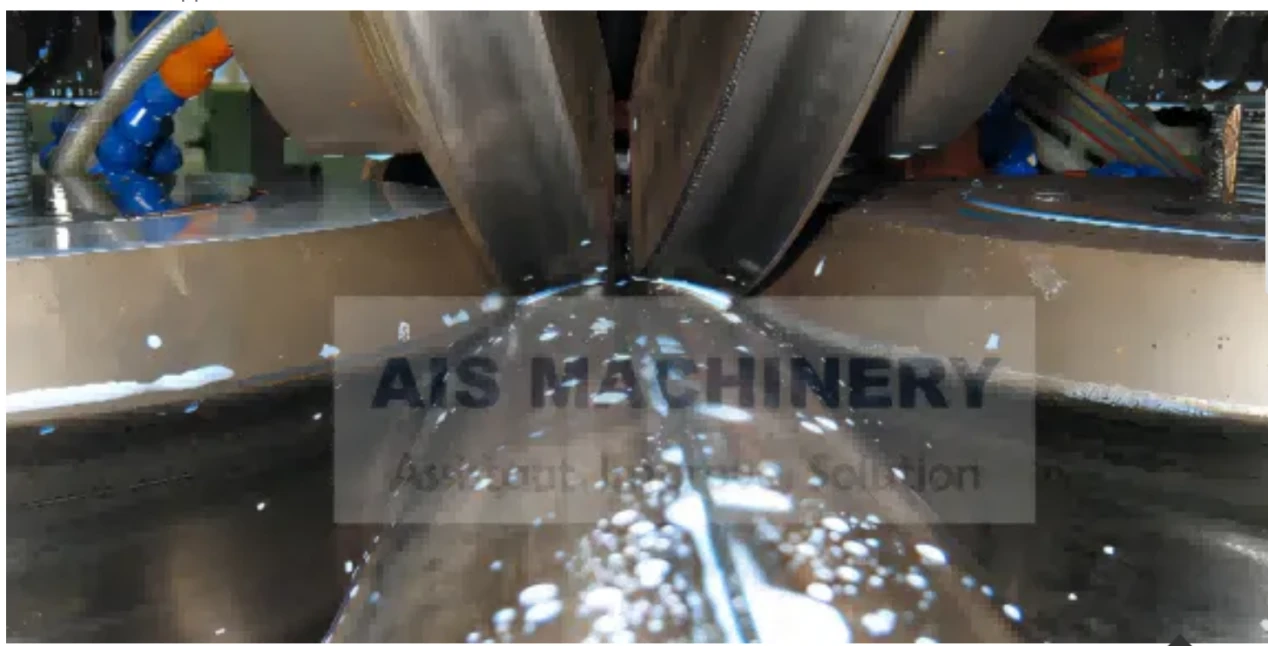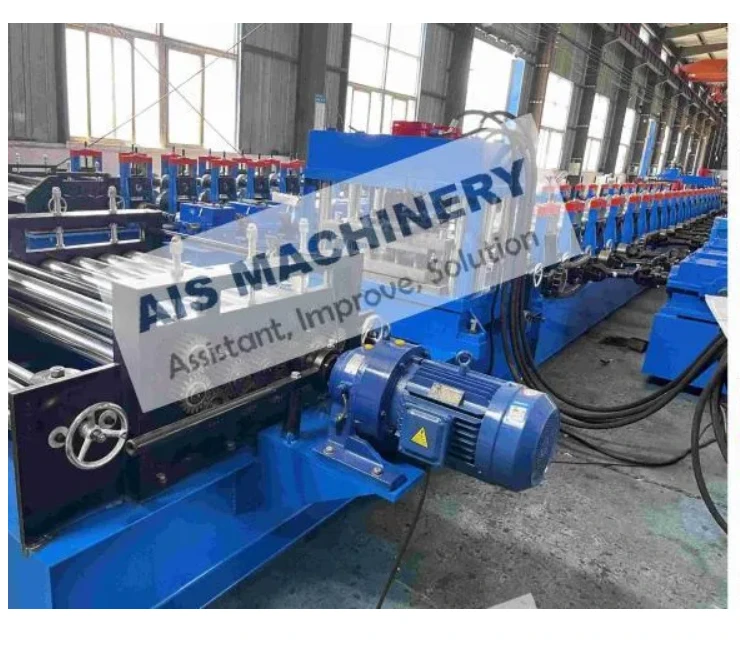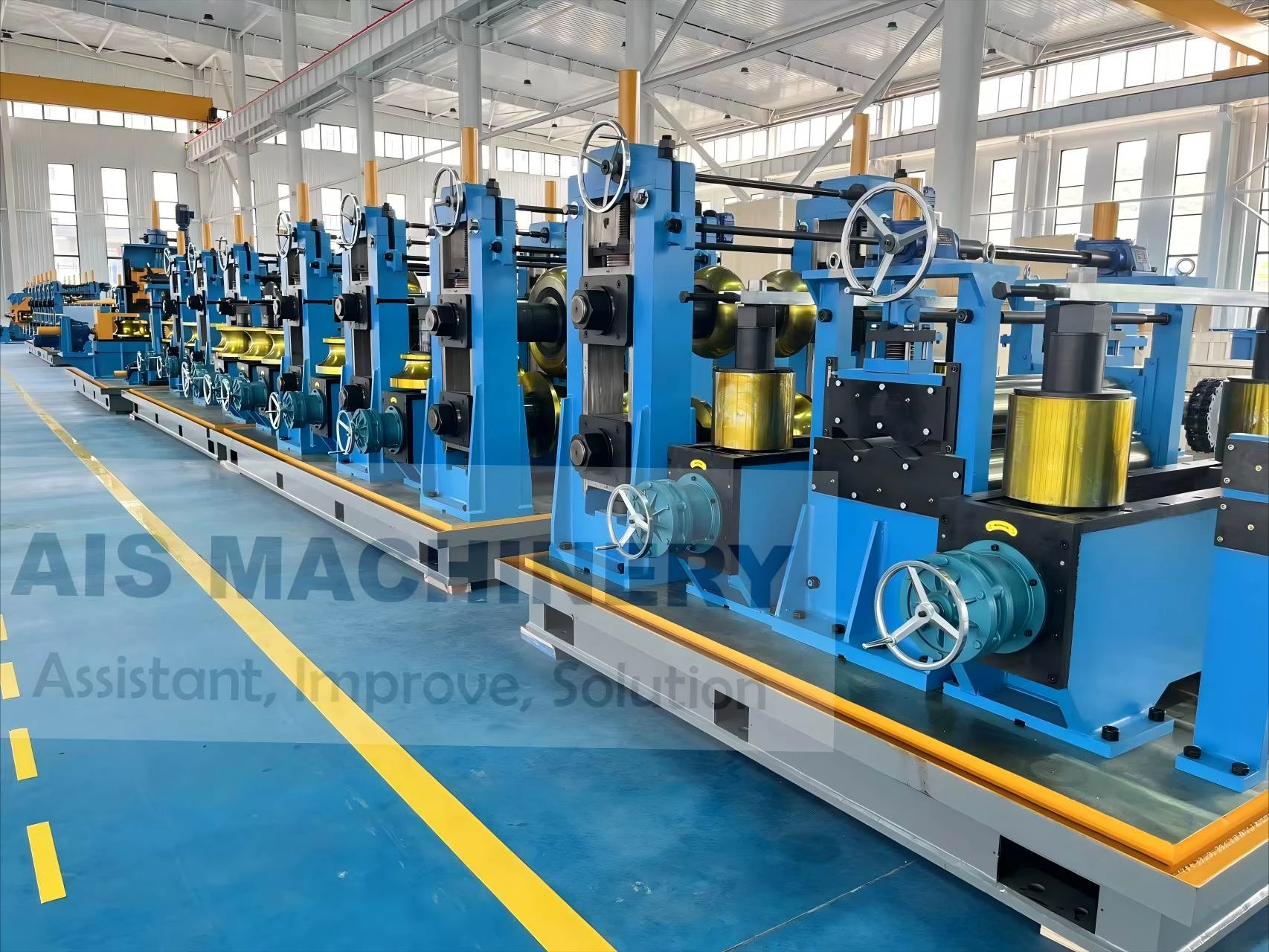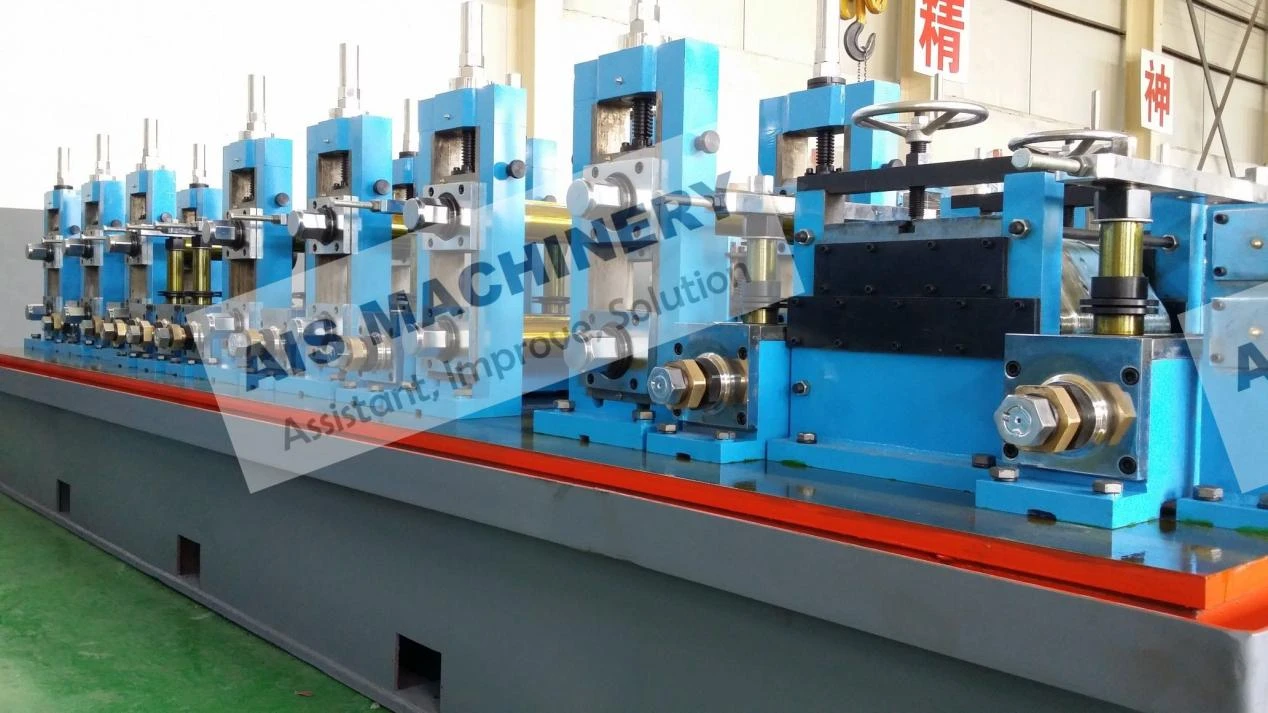-
 Tel:86-15176910262
Tel:86-15176910262
-

Ricerca
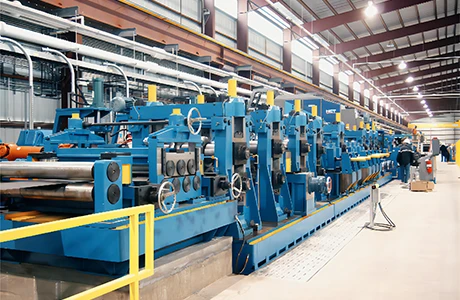
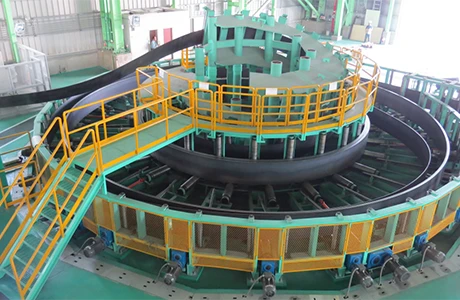
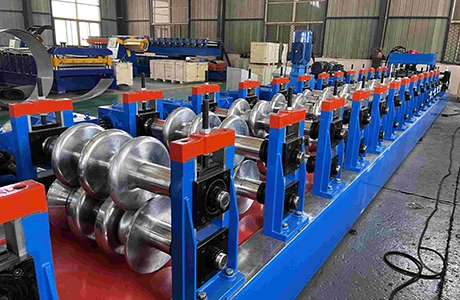
Better Tubes, Faster Lines
Mag . 08, 2025 15:53
The high frequency tube mill has become the go-to equipment for modern pipe and tube manufacturing. Unlike older methods, this technology uses high-frequency induction welding to join steel edges without using filler materials, delivering clean and precise welds at rapid speeds. As industries demand faster turnaround and higher product consistency, the high frequency tube mill has proven its place as an essential machine in the world of metal forming.
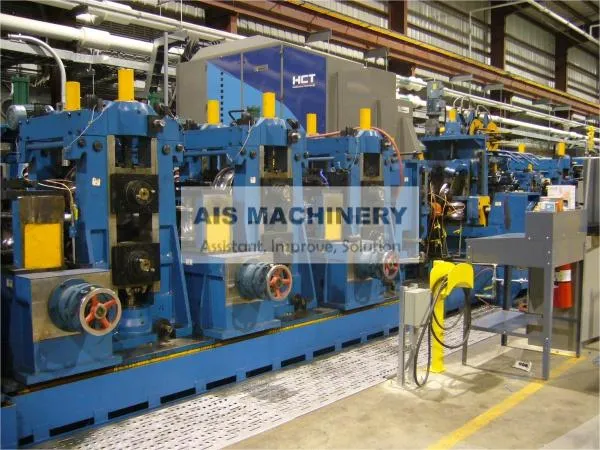
One of the biggest reasons the high frequency tube mill is so widely adopted is its ability to produce continuously, eliminating unnecessary pauses in the line. It works by forming a steel strip into a tubular shape through rollers, heating the edges with high-frequency currents, and then forging the edges together under pressure. This results in a seamless, high-strength weld that meets the most demanding industrial requirements. For large-scale production of round, square, or rectangular pipes, this method is not only efficient but extremely reliable.
Beyond just the welding technology, a high frequency tube mill is valued for its flexibility. Customers can choose from different technical solutions, such as conventional round-to-square forming, direct square and rectangular forming, or even the advanced FFX flexible forming system. This allows manufacturers to switch production styles quickly to meet specific project demands. Whether you're working on infrastructure, automotive tubing, or construction scaffolding, the system adapts easily to your material and output needs.
The high frequency process also ensures minimal deformation and tight tolerance control, both of which are essential in quality-sensitive applications. Additionally, modern mills are integrated with PLC controls and automated adjustment features that keep production running smoothly. As more manufacturers focus on reducing energy use and waste, the high frequency tube mill offers a cutting-edge answer that checks all the boxes.
How High Speed Tube Mill Boosts Output Without Compromise
When production speed matters, the high speed tube mill becomes a must-have piece of equipment. It’s designed for fast and continuous forming of tubes and pipes with superior accuracy and structural integrity. Using synchronized roll forming and high-frequency induction welding, this system ensures fast production cycles while maintaining weld quality, making it an ideal solution for large-volume output.
One of the key advantages of a high speed tube mill is its ability to maintain dimensional accuracy at high production rates. Even when operating at speeds exceeding 100 meters per minute, the system produces straight and uniform tubes. This is critical for industries such as HVAC, mechanical tubing, and general steel construction, where consistency in diameter and wall thickness is non-negotiable.
The seamless integration of forming, welding, sizing, and cutting functions makes the high speed tube mill highly efficient. Its automated controls enable fast line setup and quick size changes, helping to reduce downtime between production runs. Advanced servo and hydraulic systems also ensure each operation, from coil entry to flying cut-off, runs smoothly without manual intervention.
In addition to speed and accuracy, the high speed tube mill also supports sustainability goals. It reduces material waste through precision forming, and its energy-efficient components lower operational costs. Whether you're a small workshop expanding capacity or a large manufacturer aiming for automation, this machine offers high reliability and minimal maintenance, even in demanding production environments.
The high speed tube mill not only meets but exceeds modern manufacturing expectations. Its high throughput, low defect rate, and smart digital control make it one of the best investments for any tube production facility that wants to increase profitability while maintaining high standards.
Tube Mill Machine: The Heart of Tube Manufacturing Lines
At the center of every high-efficiency pipe production line is the tube mill machine, a system that transforms raw steel coil into precision-engineered tubes. Whether round, square, or rectangular, the tube mill performs critical forming, welding, sizing, and cutting processes, all in a continuous line. This combination of strength and simplicity has made the tube mill indispensable across many sectors of industry.
A modern tube mill machine starts by uncoiling and straightening steel strips, which are then gradually shaped through a series of rollers. The strip is then welded using high-frequency induction or contact welding, after which it is sized and cut to required lengths. All of this happens seamlessly and at high speed, providing manufacturers with unmatched production capability and repeatability.
One of the greatest strengths of a tube mill machine lies in its flexibility. Customers can select from various configurations, including conventional round-to-square, direct square for square and rectangular pipes, or advanced FFX technology for fast forming transitions. Each system can be customized for different material types, thicknesses, and pipe dimensions. This flexibility is vital for manufacturers supplying to multiple industries such as construction, automotive, energy, and furniture.
In terms of automation and control, today’s tube mill machines come equipped with real-time monitoring, servo-driven roll change systems, and touch-screen interfaces that make the entire operation efficient and user-friendly. These features reduce operator workload, shorten setup time, and ensure consistent product quality with every run.
Whether you're upgrading an existing production line or starting from scratch, the tube mill machine provides the core functions you need to meet market demands. It enables higher productivity, better quality control, and scalability for future growth—all from a single integrated system.
Why ERW Carbon Steel Tube Mill Is in High Demand
For manufacturers focused on strong and cost-effective steel tubes, the ERW carbon steel tube mill has become the top choice. This specialized equipment is built to produce electric resistance welded (ERW) tubes from carbon steel coils—offering excellent mechanical properties and low production costs. The demand for ERW tubes is increasing across industries like oil and gas, automotive frames, and water infrastructure, making this mill essential for competitive manufacturing.
What makes the ERW carbon steel tube mill especially appealing is the way it combines formability, strength, and economy. Carbon steel is widely available and easy to process, and ERW welding provides solid joints without the need for filler material or post-weld cleaning. This allows for fast and economical production of long tube sections that meet international standards for structural and pressure-bearing applications.
The mill works by feeding steel strips through forming rollers that shape it into a tube, followed by a high-frequency welding section where the edges are joined using electric current. The ERW carbon steel tube mill then guides the welded tube through sizing and cutting stations, resulting in perfectly dimensioned end products. This workflow supports both small-batch flexibility and large-scale production reliability.
Another benefit of the ERW carbon steel tube mill is its compact and modular design, which allows it to be installed in limited factory spaces while still delivering high output. It also offers the option of coil end joining and automatic stackers to minimize manual labor. When paired with CNC controls and smart feedback systems, this mill becomes a fully optimized tube manufacturing solution.
With rising global demand for infrastructure, transportation, and energy, the ERW carbon steel tube mill represents a smart and forward-looking investment. It balances production efficiency with cost control and positions your operation to serve a wide range of industries.
Tube Mill Machine FAQs
What is a high frequency tube mill used for?
A high frequency tube mill is used to produce metal tubes and pipes with precise dimensions, primarily using high-frequency induction welding for strong, clean welds.
How fast is a high speed tube mill compared to traditional mills?
A high speed tube mill can operate at speeds exceeding 100 meters per minute, which is significantly faster than traditional methods while maintaining excellent product accuracy.
Can the same tube mill machine produce different tube shapes?
Yes, a tube mill machine can be configured to form round, square, and rectangular tubes using various forming technologies such as round-to-square or direct square systems.
What makes the ERW carbon steel tube mill suitable for structural applications?
The ERW carbon steel tube mill produces welds with high strength and uniformity, ideal for structural uses in industries like construction and energy.
Where can I buy a reliable tube mill machine?
You can visit our official website to explore the full range of tube mill machines, compare specifications, and connect with technical experts to find the best solution for your production needs.
If you're in the business of manufacturing metal pipes and tubes, investing in a tube mill machine that combines high frequency welding and high-speed performance is a game-changer. From small-scale production to fully automated high-volume lines, these machines deliver the strength, precision, and speed you need to stay competitive. Explore our solutions for high frequency tube mills and ERW carbon steel tube mills on our website today—turn your production line into a smart, future-ready facility with just one click.
Prodotti correlati
Notizie correlate
Invia un messaggio
Dear customer, thank you for your attention! We provide high-quality machinery and equipment and look forward to your orders. Please inform us of your needs and we will respond quickly!

